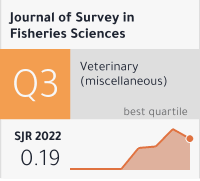Agriculture policies in India: A Review
DOI:
https://doi.org/10.53555/sfs.v10i2.1113Keywords:
Agricultural policies, Allied sectors, Micro irrigation, Agriculture trade policies, LegislationAbstract
Agriculture remains a vital sector and is considered as backbone of the Indian economy, even though its
share of gross domestic product (GDP) has declined from around 50 percent in the early 1950s to 20.2
percent in 2020-21. Agricultural employment has also declined, albeit slowly and currently accounts for 52%
of the country’s total labor force. However the agriculture and allied sector has emerged as the most resilient
sector of the Indian economy after the COVID -19 pandemic, with positive growth rates and increasing
output in the last two years. India has a net cultivated area of 140 million hectares, surpassed only by the
USA. Also, the irrigated area of India (63.26 million ha net and 86.42 million ha gross) is the second largest
in the world, after that of China. The country is rich in natural resources and diverse climatic conditions and
most of the land can be double cropped. Considering as one of the important sectors, knowledge of various
government policies is essential for utilizing much from it. Therefore, in this review we will evaluate all
agricultural policies from 1947 under 5-year plans.
The achievement of the agricultural sector has been quite encouraging and has led the country to food selfsufficiency. During the Eleventh Five-Year Plan, the agriculture and allied sector recorded a regular annual
growth rate of 3.6 percent, slightly below the target of 4.0 percent but higher than the average annual growth
rate of 2.4 percent achieved during the Tenth Plan. This improved representation in recent years is also due to
the impressive growth of capital formation in this sector. The gross capital formation in agriculture and allied
sector has more than doubled over the past 10 years with an average annual growth of 8.1 percent. As per the
latest Agricultural Statistics at a Glance (2022), India is the world’s largest producer of pulses, milk,
sugarcane, major spices, jute and ranks as the second largest producer of rice, wheat, groundnut, vegetables,
fruit and cotton.









